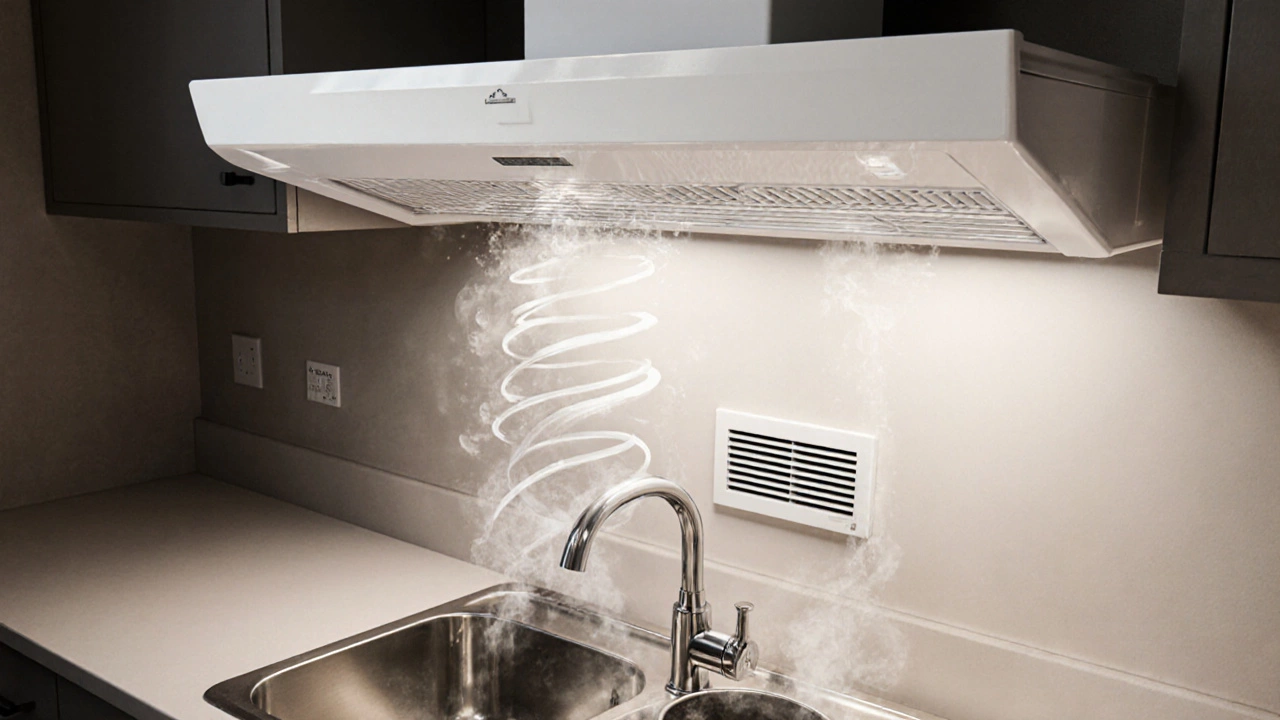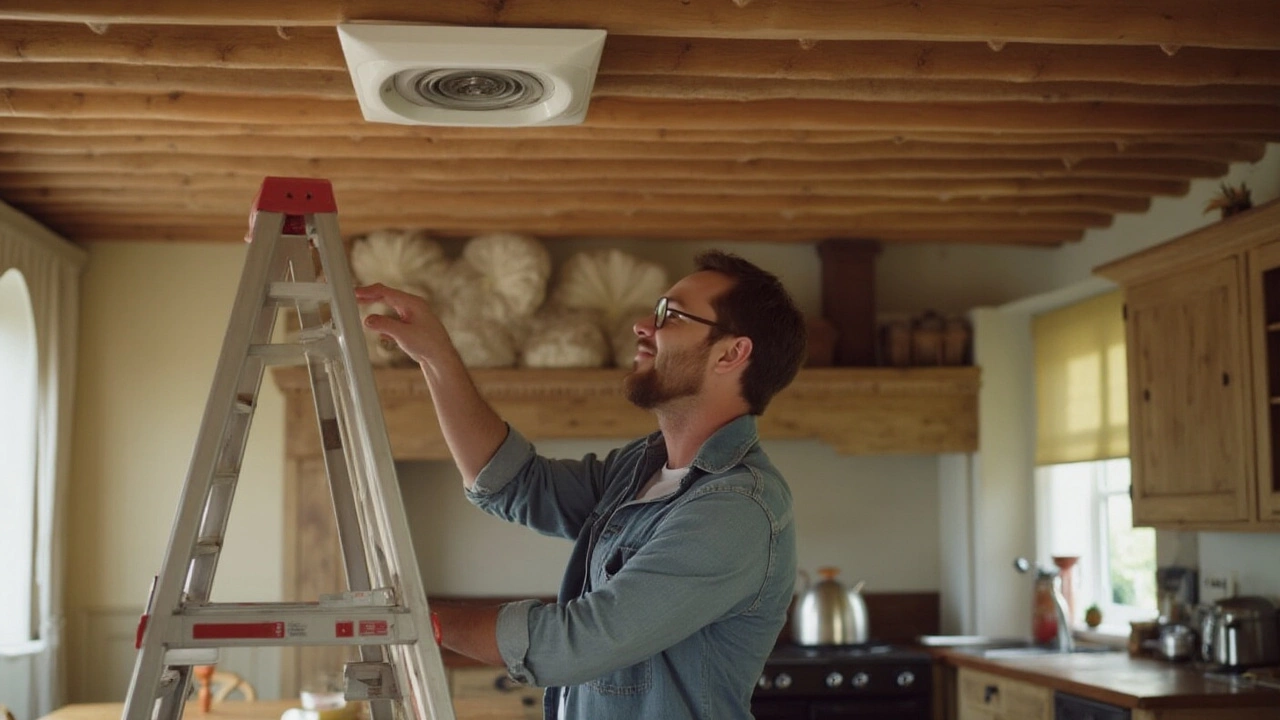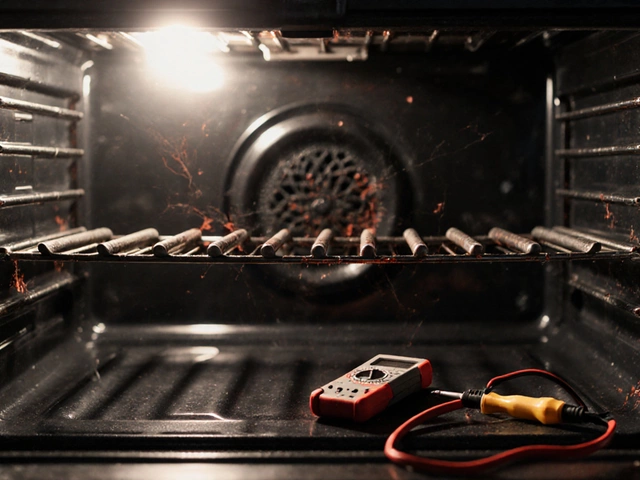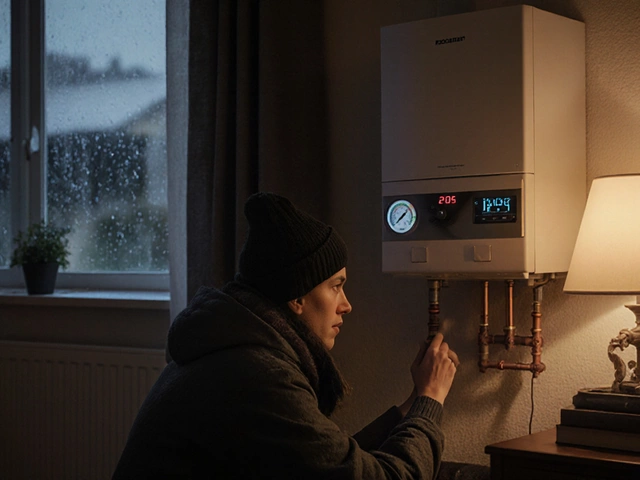Extractor Fan Size Calculator
Recommended Fan Specifications
When you hear the term Extractor fan is a mechanical device that pulls stale or moist air out of a space and vents it outdoors, you probably picture a small white box over your kitchen sink. But the right choice depends on airflow, noise, placement and the local building code.
Quick Takeaways
- Match fan airflow (CFM) to room volume - the higher the CFM, the faster the air is removed.
- Choose a noise level you can live with; look for ratings in sone rather than decibels.
- Axial fans are cheap and good for short ducts; centrifugal fans handle longer runs and higher static pressure.
- Energy‑efficient models with humidity sensors can cut electricity use by up to 30%.
- Make sure the fan meets the NZ Building Code (AS/NZS 4254) for safe installation.
1. Core specs you need to compare
Two numbers dominate the decision‑making process:
- Airflow (CFM) - Cubic Feet per Minute tells you how much air the fan can move. A typical kitchen needs 100-150CFM per square metre of floor area, while a bathroom can get by with 50-80CFM.
- Noise rating (sone) - One sone is roughly the sound of a quiet conversation. Most homeowners find 1.5sone acceptable for a kitchen; bathrooms often tolerate up to 2sone because the fan runs briefly.
Other useful attributes include power consumption (watts), motor type (EC vs. AC), and whether the fan includes a built‑in humidity sensor.
2. Types of extractor fans and where they shine
Not all fans are created equal. Here are the most common families, each defined once with schema markup:
Axial fan is a straight‑through design where air enters and exits on opposite sides of a rotating blade. It’s cheap, low‑profile and works best with short, straight ducts.
Centrifugal fan is a radial‑flow unit that pushes air outward at 90degrees, creating higher static pressure. Ideal for longer runs, bends or when you need to overcome resistance.
Inline fan is a ducted unit installed within the ventilation run, often hidden in attics or crawl spaces. It offers quiet operation and flexibility in placement.
Roof‑mounted fan is a fan that exhausts directly through the roof, eliminating the need for a wall vent. Great for garages or workshops where wall space is limited.
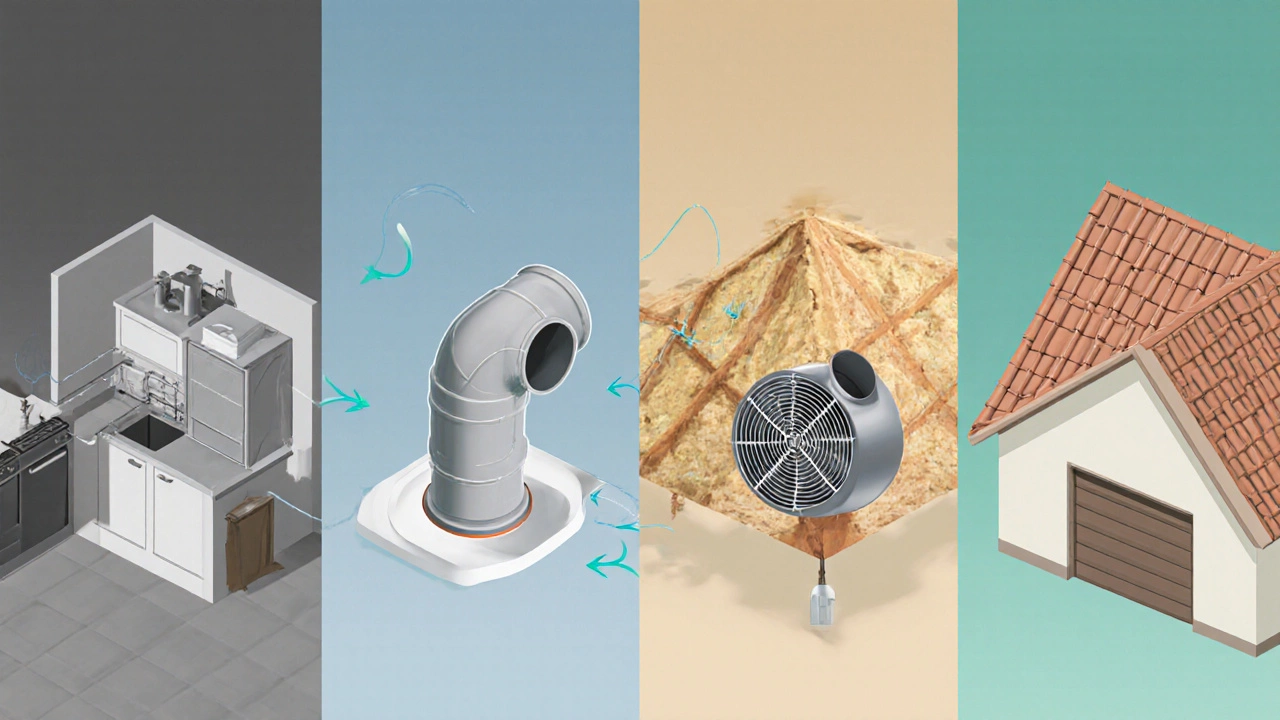
3. Sizing a fan to your room
Start with the room volume: length × width × height = cubic metres. Multiply by the recommended air change rate - 10 ACH (air changes per hour) for kitchens, 8 ACH for bathrooms. Convert the result to CFM (1m³/min ≈ 35.3CFM).
Example - a 3m×2m×2.4m kitchen:
- Volume = 14.4 m³
- 10ACH = 144m³/h ≈ 2.4m³/min
- CFM needed ≈ 2.4×35.3 ≈ 85CFM
4. Energy efficiency and smart controls
Modern fans often feature humidity sensor that automatically ramps up when moisture spikes and shuts down once the air is dry. This can shave 20‑30% off electricity bills compared to a constant‑speed unit.
Look for EC (electronically commutated) motors - they run cooler, louder, and use up to 50% less power than traditional AC motors. If you’re wiring a new circuit, a 12A dedicated breaker is usually sufficient for most residential fans.
5. Top recommended models (2025)
| Model | Type | Airflow (CFM) | Noise (sone) | Best for | Price (NZD) |
|---|---|---|---|---|---|
| Vent‑Axia Lo‑Carbon 150 | Axial | 150 | 1.2 | Standard kitchen with short duct | ≈$180 |
| Fantech FR110S | d>Centrifugal | 110 | 0.9 | Bathrooms with long duct runs | ≈$210 |
| Panasonic FV‑20VQ2 | Inline | 200 | 0.7 | Hidden installations, high CFM needs | ≈$260 |
All three meet the NZ Building Code requirements for ventilation and have EC motors for low energy draw. Choose the type that matches your duct layout and noise tolerance.
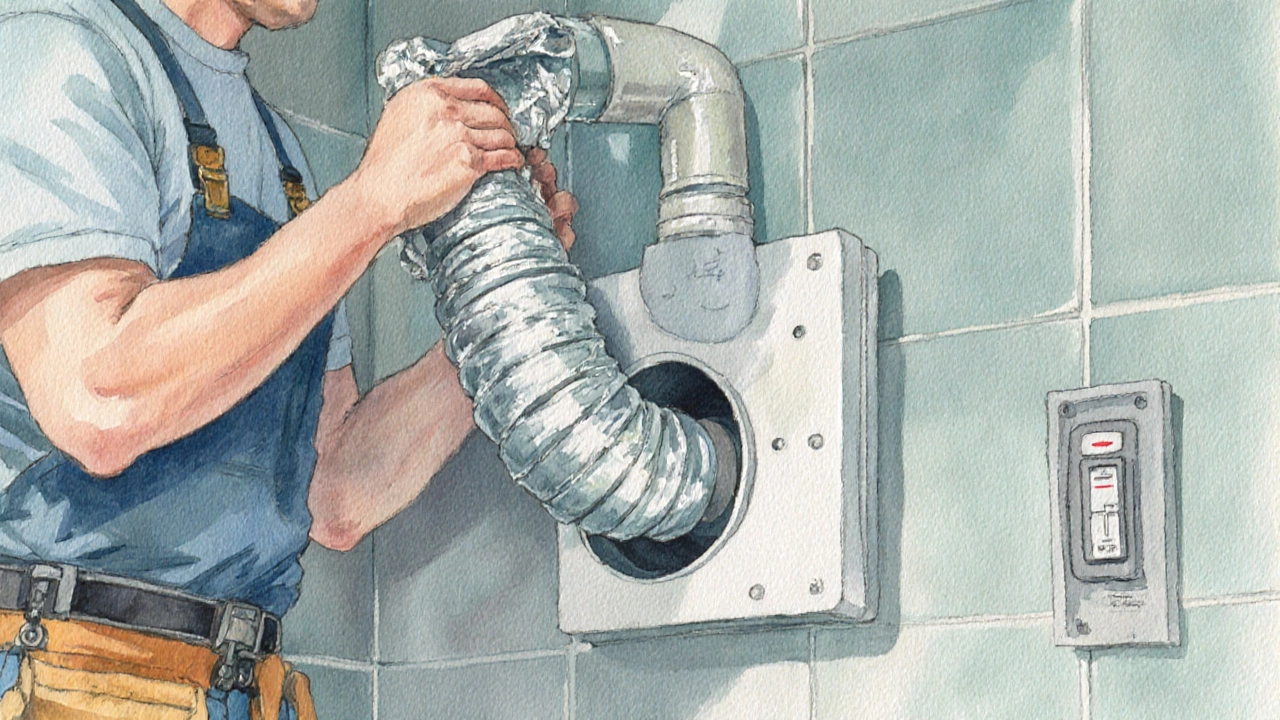
6. Installation basics you can do yourself
Before you start, turn off power at the breaker and check that the fan’s rating matches the circuit. The most common pitfalls are:
- Undersized duct - a duct that’s too narrow raises static pressure, reducing effective CFM.
- Sharp bends - each 90° turn adds roughly 0.5inH₂O of pressure loss. Keep bends under 2‑3 in a typical kitchen run.
- Missing backdraft damper - without a damper, outside air can flow back into the room when the fan is off.
Mount the fan level, seal duct joints with foil-backed tape, and attach an exterior vent grille that complies with AS/NZS 4254. If you’re installing a roof‑mounted fan, make sure the flashing is watertight to avoid leaks.
7. Pro tips & common mistakes
- Don’t rely solely on advertised CFM; real‑world performance drops 10‑20% after accounting for duct loss.
- Pick a fan with a slightly higher CFM than the minimum calculation - it gives you headroom for future cooking appliances.
- If noise is a deal‑breaker, opt for a centrifugal or inline model with a built‑in acoustic liner.
- Consider future smart‑home integration. Many EC fans now support Wi‑Fi controllers that let you monitor run‑time and energy use.
- Always verify the fan’s compliance label - in New Zealand you’ll see a “NZS” mark indicating it meets the relevant standards.
By keeping these factors top of mind, you’ll walk away with a fan that clears steam fast, stays quiet, and lasts for years.
Frequently Asked Questions
What size fan do I need for a 10m³ bathroom?
A bathroom of that size typically requires 80‑100CFM. A 100CFM centrifugal fan with a 0.9sone rating will meet the ventilation code and stay quiet.
Can I install an extractor fan myself, or do I need a licensed electrician?
If the fan is wired to an existing switched socket and you’re comfortable with basic wiring, DIY is fine. However, any new dedicated circuit or roof‑mounted installation should be done by a licensed electrician to satisfy the NZ Building Code.
Do I really need a back‑draft damper?
Yes. Without a damper, wind pressure can push cold air back into your kitchen or bathroom, wasting energy and potentially causing condensation.
Which fan is the quietest for an open‑plan kitchen?
Inline fans tend to be the quietest because the motor sits inside the duct. The Panasonic FV‑20VQ2, rated at 0.7sone, is a solid choice for open‑plan layouts.
How often should I clean the fan filter?
For kitchens, clean the metal mesh every 3‑4months. Bathrooms with high humidity may need monthly cleaning to prevent mould buildup.
Armed with these facts, you can walk into any hardware store (or browse online) and pick the perfect extractor fan for your home. The right fan not only removes steam and smells quickly, it also saves energy and keeps your living space comfortable year after year.
